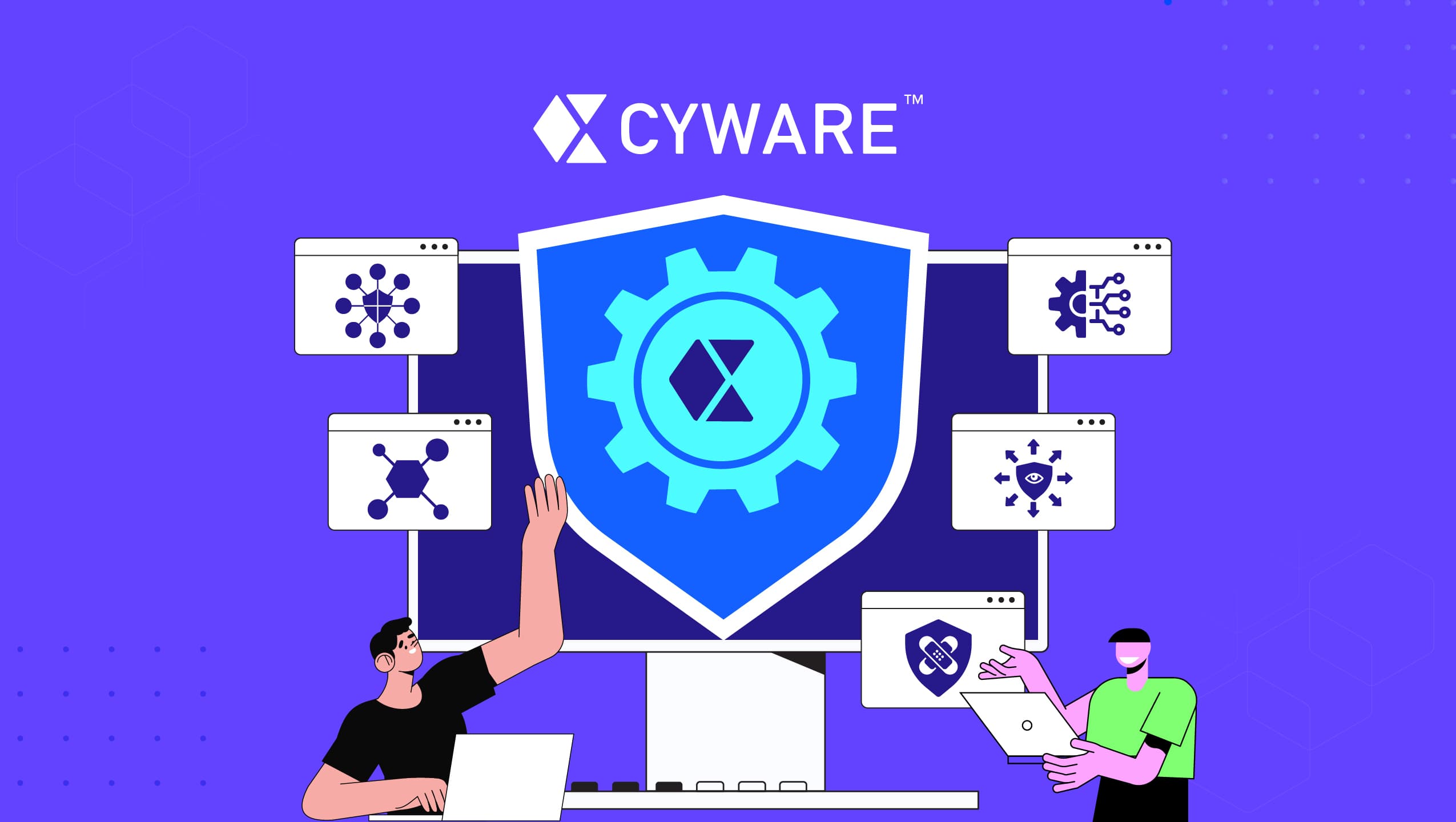
Recently, we covered the top 6 challenges facing vulnerability management teams—and the four capabilities teams really need to move the needle on vulnerability risk:
Complete visibility of their environment
Intelligence-led prioritization
Monitoring of the VM process and outcomes.
Comprehensive automation and orchestration
In this article, we’ll look at how Cyber Fusion can provide these capabilities for vulnerability management teams in a way that previous technologies—most notably, SOAR—have failed to do.
Enhancing Vulnerability Management with Cyber Fusion
Cyware’s Cyber Fusion solution unifies SecOps, ITops, and DevOps and ensures insight into all data (assets, users, malware, attackers) enabling collaboration and seamless sharing of intelligence across previously siloed functionality.
A Cyber Fusion Center (CFC) solution combines the full functionality of Security Orchestration, Automation, and Response (SOAR) and Threat Intelligence Platform (TIP) while expanding four additional essential capabilities:
Enhanced any-to-any integration and orchestration
Threat intelligence sharing and collective response
Situational awareness and threat context
Collaboration across any defined security ecosystem
By combining these capabilities, CFC delivers what vulnerability management teams really need: instant access to all relevant vulnerability intelligence, complete visibility into the vulnerability management process, and seamless orchestration and automation of any process, including audit.
The architecture diagram below demonstrates how a Cyber Fusion Center solution unifies security, giving teams a single location to access all data and functionality.
How Does Cyber Fusion Support Vulnerability Management?
A CFC solution provides five essential capabilities that support effective vulnerability management:
#1 Connectivity
A CFC solution is designed to connect all security and IT operations tools, assets, and data. This allows vulnerability management teams to leverage all data available to them to monitor all assets, including which software and versions they are running. This oversight helps to solve one of the key vulnerability management challenges—incomplete asset data—and has a profound positive impact on managing vulnerability risk.
#2 Centralized vulnerability intelligence
CVSS scores don’t help organizations understand the risk a vulnerability poses to them. They need to reference data and intelligence from multiple internal and external sources, which can be a frustratingly manual exercise. A CFC solution addresses this by collecting all intelligence into a single location and making it readily available to vulnerability management teams.
Asset data, endpoint clients, attack surface scanners, and more.
Vulnerability data from scanners and threat feeds.
Exploit data from Exploit Database, Metasploit, and other sources.
CTI from threat feeds, proprietary exploit data, intelligence sharing groups, etc.
This allows teams to assess vulnerability risk based on a comprehensive picture of both the internal and external threat landscape. Best of all, much of this work can be orchestrated into a proprietary risk assessment playbook that automatically prioritizes the results of vulnerability scans.
#3 Any-to-any orchestration
Many SOAR tools claim to offer comprehensive orchestration, but most are limited to integrations with specific tools or vendors. A CFC solution provides true any-to-any, agnostic integration, and orchestration, including between internal and cloud tools.
This allows teams to orchestrate processes that combine functionality from multiple tools, including CMDB, EDR, TIP, and case management. For example, teams can automatically risk assess and prioritize vulnerabilities and take remediation steps like patching and stakeholder communications.
#4 Situational awareness and intelligence sharing
A deciding factor in vulnerability risk is whether a known vulnerability is actively being exploited at a point in time. A CFC solution facilitates real-time sharing of Cyber Threat Intelligence, enriched with context, for sharing and collaboration between security teams, roles, and organizations. Intelligence sharing communities like ISACs use CFC solutions to quickly inform partners and industry colleagues when they observe a vulnerability being exploited, allowing the entire community to proactively remediate risk.
#5 Automated remediation
A CFC solution provides true orchestration and customized, or pre-defined playbook building, allowing vulnerability management teams to automate time-consuming processes. Where appropriate, playbooks can trigger automatically, completely removing the burden from analysts.
Orchestrating multi-stage patching processes is a substantial time saver and enables automated audit tracking, ensuring there is a complete and permanent record of all activities. While fully-automated patching is often considered a risk, many organizations use a CFC solution to automate critical remediation steps such as stakeholder communications and follow-up.
These capabilities provide a host of benefits for vulnerability management teams, including:
Accurate vulnerability risk assessment
More consistent remediation
Prioritize response to high-risk vulnerabilities
Reduce manual burden on security teams
Eliminate false positives and no-risk vulnerabilities
Fewer opportunities for human error
Fully automated audit trail
Significantly reduced vulnerability risk
Uplevelling Vulnerability Management for 2022 (and Beyond)
Cyber fusion can help vulnerability management teams overcome their most pressing challenges while integrating and coordinating more effectively with security and IT operations colleagues.
To demonstrate how—with clear use cases—we’ve released a new white paper:
Download the white paper today to learn how your organization can orchestrate a comprehensive vulnerability identification, prioritization, and remediation program based on your specific risk profile—while dramatically reducing the manual burden on your vulnerability management team.
Read the white paper to learn:
The four essential requirements for risk-based vulnerability management, and how they combine to improve security outcomes drastically.
How to unify security and IT operations tools, allowing teams to more effectively identify, prioritize, and remediate vulnerabilities.
How Cyber Fusion can help teams accurately prioritize vulnerabilities, eliminate false positives, decrease manual burden, and reduce vulnerability risk.
About the Author

